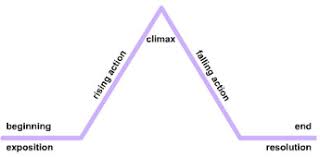The original material-https://www.studiobinder.com/blog/what-is-genre-definition/
Genres are stylistic categories where a particular movie can be placed based on setting, characters, plot, mood, tone and theme. A film's main genre category will be based on where the majority of the content lands.
One of the most significant determining factors to a genre is setting. It's ultimately the time and place of a story. Setting is either outwardly articulated to us, or discretely suggested to us. It can be suggested by weather, clothing, culture, architecture etc. For example dusty, empty landscape with a saloon and stables can be the Western setting. Also if you envision space with a shuttle floating through it while planets gaze behind it, you can think of Science Fiction.
Setting is an important aspect of how a film might fall into specific genre. A lack of intention with setting in a film can weaken a story and the audience's experience of the film. This is why an entire department is dedicated to fleshing out the details of a story's setting-the art department.
The art department is in charge of the production design of a film which directly affects the setting.
Even with a story, plot and setting locked in, a film needs characters to execute the experience. Characters are typically a tell-tale sign of a film's genre-not only physical characteristics, but internal characteristics as well. A character's desires, behavior, or personality may lend itself to a specific genre. For example in the crime genre audiences have grown to love anti-heroes. Anti-hero is a narrative protagonist who is defined by their own self-interest and who generally lacks the qualities we expect from a hero. A character that is an anti-hero works incredibly well within the crime genre because they will ultimately have to make a choice between their own self-interest or the greater good which is a story everyone loves. Characters alone of course do not define a film's genre. They largely must fall within a specific type of plot to really fall into a film genre.
A plot refers to the main events in a story composed as a connected sequence of events. This is the execution of the chain of events that happen in a story. While there are overarching plot structures that transcend categories such as the three act structure or the hero's journey, how these structures are executed within the plot is what can determine the film's genre. Another way to look at this is how two films can both follow a traditional three act structure. How these films differ is determined by how specific aspects are executed such as the rising action.
Say Film #1's rising action involves two characters going on a road trip together and slowly falling in love. Film #2's rising action consists of a jewelry thief putting together a team for the ultimate heist. Both films abide by this plot structure, but the execution of the structure is what makes one a romance and the other a crime film. The execution of a film's plot will rely heavily on the story's backbone-the theme.
Every good film has a central topic or message within a story. This is the film's theme. A theme is often called the backbone of a story because it is essentially what the audience will walk away with once the credits roll.
Different film genres often cover the same themes. This in and of itself is not inherently bad storytelling as long as the film avoids consistent cliche. For example, romances typically have themes focused on love, science fiction may work with themes centered hubris, and action films may deal with themes around vengeance.
When writing your own story or screenplay, it pays to understand the components of genres. While a poor genre film can undoubtedly be cliche, a great one film can be a classic. Genre is a way for storytellers to communicate with an audience as a story progresses. Ultimately it gives audiences expectations that filmmakers can fulfill or subvert, both of which are opportunities





Comments
Post a Comment